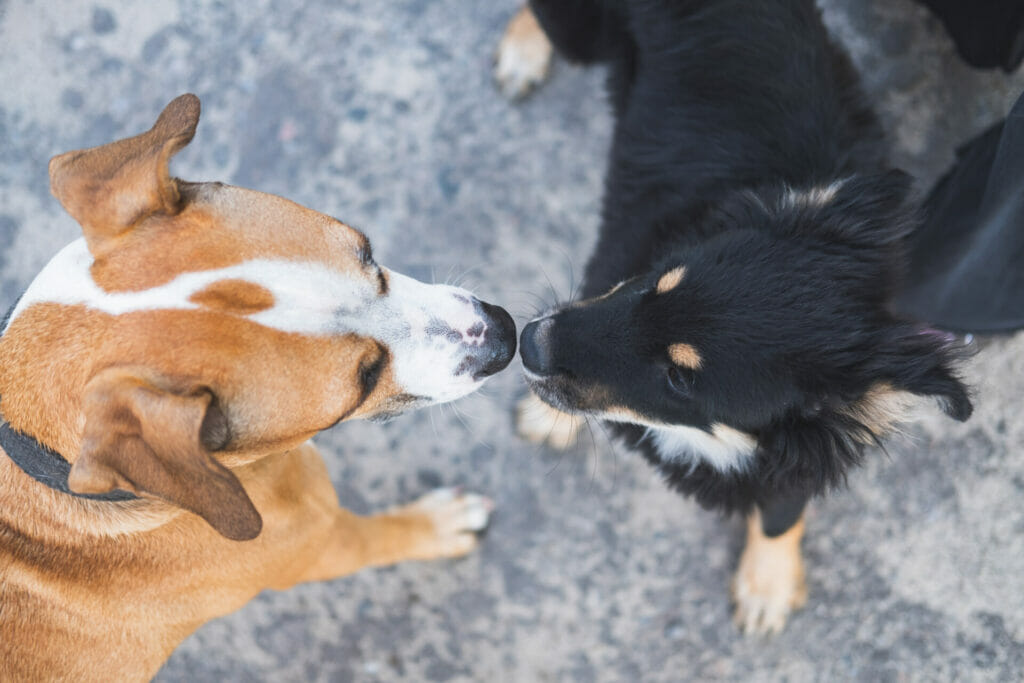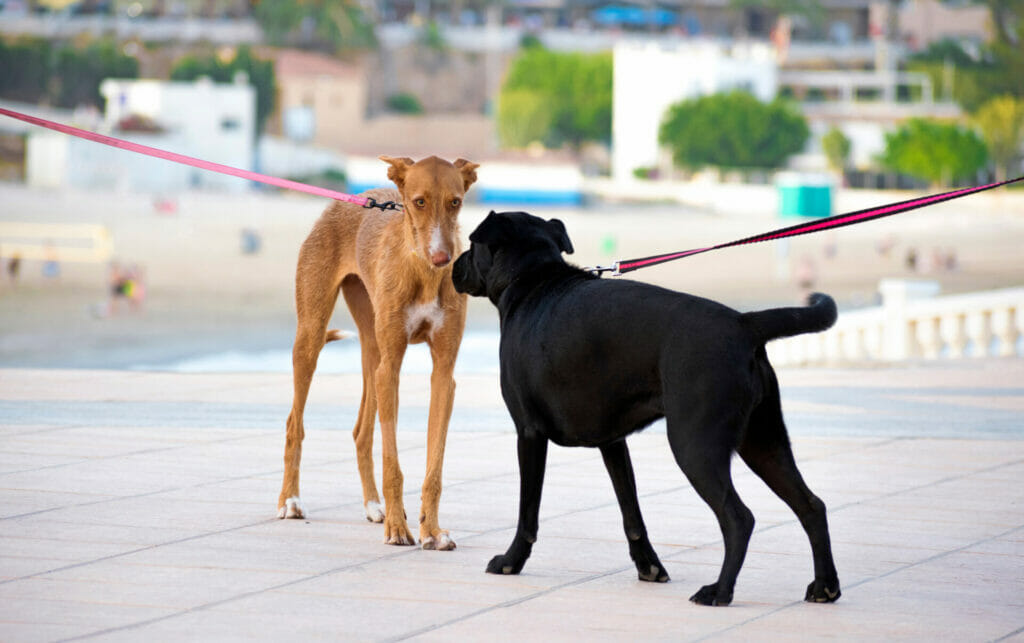Dogs aren’t going to be friends with every dog they meet. In fact, from a training perspective, it’s far better to teach your dog to ignore other dogs than to encourage greetings. Some dogs have never met a dog they don’t like. These social dogs, however, are in the minority. Actually, most dogs are more selective or even wary about meeting new dogs. Whether you’re considering adding a new dog to the family or want to introduce your dog to a friend’s, there’s lots to think about. Thoughtful introductions can help dogs form better relationships.
Plan ahead
Planned introductions are especially important for dogs with a history of uncertainty with other dogs. In this case, prioritize introducing your dog to other dogs on a “need to meet” basis. Your dog doesn’t need to like or engage with the dogs in your neighborhood. However, for dogs that will be frequently sharing your space (e.g. friend’s dog, family member’s dog), you’ll want to be intentional about the introduction. For everyone’s safety and to encourage good relationships between the dogs, plan for where and how to introduce them.
Location matters
When introducing your dog to a new friend, the location of the introduction matters. Introductions are best in a neutral area. Avoid introducing your dogs at home as this can put dogs on edge. Introducing a dog to another dog in their home, or even in their own yard, can evoke protective feelings. Tension may result in conflict between dogs and the intro less than ideal. Instead, select a quiet, open area where dogs have lots of space.
Safety first
When introducing dogs for the first time, make sure there is a person to work with each dog individually. Start with leashed dogs for safety. This way, you can separate the dogs if needed. Keep the leashes loose. Putting tension or pressure on the leash might cue negative feelings. And runs the risk of a potential squabble or fight. If you have multiple dogs to introduce to the new dog, introduce dogs one at a time. This prevents the new dog from getting overwhelmed or ganged up on.

Parallel walks
Another helpful strategy for introducing dogs is distance via parallel walks. For nervous dogs who may be wary about meeting other dogs, this is a slow adjustment. When dogs meet for the first time, they don’t need to sniff each other. Instead, begin with parallel walks at whatever distance apart is necessary for both dogs to be calm. Also remember treats so the dogs are comfortable with recall. Start 15-25 feet apart so the dogs have room to loose-leash walk without getting too close. Walking next to each other helps dogs familiarize with sight, sounds, and smells of the other dog without having to directly interact. When your dog looks at the other dog, praise and reward them with a treat.
Our goal here is to reward the dogs for calm behavior and body language. Another goal is to encourage engagement without fixation on the other dog. If both dogs relax, slowly decrease the distance between the dogs and continue to praise and reward the calm behavior. Then, let one dog walk closer behind the other dog and sniff, then repeat with the other dog continuing to praise and reward your dogs for calm interactions.
Remove stressors
When introducing dogs, remove high-value items like treats, toys, balls, and chews from the area. These resources can make introductions more stressful between dogs as one dog may try to take ownership of them. This can result in resource guarding or conflict between dogs, which will make it more difficult for the dogs to get along well in the future. Over time after dogs have successfully met and bonded, introduce higher-value items like toys and treats if neither dog has a history of resource guarding. After introducing dogs in a neutral space make sure that food bowls, treats, and toys have been picked up before bringing them into the house to prevent fights over these resources as dogs are still getting to know each other.
Manage interactions
Once dogs have successfully been introduced to each other, it’s still important to manage and supervise interactions. Consider keeping lose leashes on while having supervised interactions to make it easier and safer to separate dogs if a conflict arises. We want our dog to have positive interactions with the other dog, but that doesn’t mean they need to be obsessed with them. It’s healthy for our dog to engage and then disengage to regulate their own emotional response. Let dogs naturally engage at this stage. It’s actually more harmful to wind them up with rambunctious play. Continue to praise your dog for appropriate interactions with the other dog. You also want to praise and reward for any engagement with you such as turning away from the other dog because this creates natural breaks in play and engagement which can help dogs to get along better.
Introducing dogs can be stressful. Dogs are individuals and have their own personalities. With careful planning and management, it is often possible to introduce dogs and increase the likelihood that they will get along. Set your dog up for success by keeping interactions short and positive and choosing to disengage from the other dog can help encourage positive interactions between dogs moving forward.




















